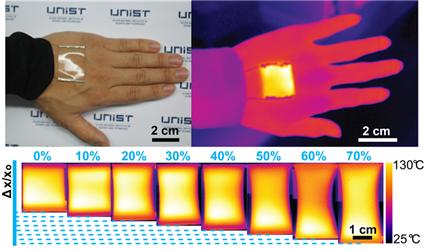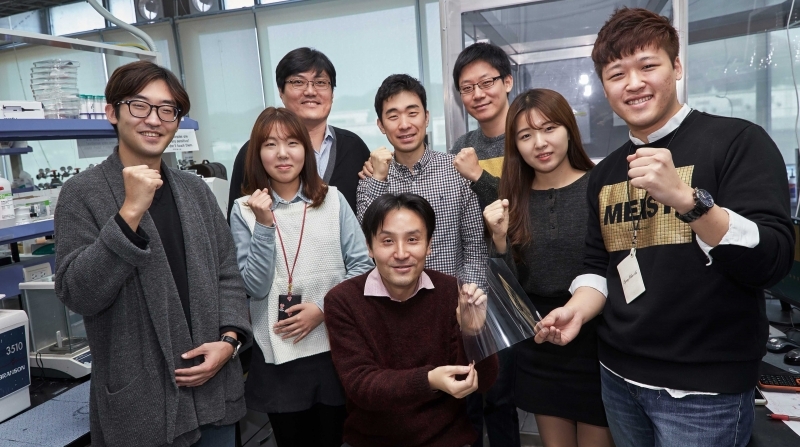The transparent heater that people can attach it on their hands or the clothes is developed at UNIST. This research was introduced on the online version of Nano Letters on December 15, 2015.
Prof. Jang-Ung Park and Prof. Ju-Young Kim’s joint research team (School Materials Science and Engineering) has developed the technology of producing a large scale of transparent electrode with a use of the metallic glasses in about 10 seconds. The metallic glass is a new material which is originally a kind of alloy. This fast and large product of transparent electrodes was possible due to its significantly improved elasticity and heat-resistance property.
The research team materialized the transparent electrodes by using the metallic glass. This material is more elastic and does not usually get rusted compared to the general metals, so its oxidation resistance and corrosion resistance are comparatively high. Consequently, the electric conductivity is also high, so the overall resistance is 10 times lower than general Indium Tin Oxide (ITO).

The wearble heater that can be attached on human skin. We can see that the temperature is stable until 70% of stretching.
The transparent electrode based on a use of metallic glasses maintains its high performance without getting oxidized or rusted even after the long-term exposure to air. Also, because of transparent electrode’s outstanding elasticity, its electrical characteristics would not get weaken even if it is folded into half or stretched.
A key to this technology is the method of Roll-to-Roll, which is the process of rolling a very thin film around the roll when people make the circuit. Lots of companies can lower the production cost and manufacture a large scale of transparent electrodes in short time by using this Roll-to-Roll method.
The research team also succeeded to materialize the gas sensor that can sense the dangerous stuffs around. It can be attached on the end of finger to help the users to sense the harmful gas. In addition, they developed the wearable heater which is stretchable and transparent. People can simply attach this wearable heater on their skin or clothes to stay warm in the winter season.
Ms. Eunji Gwak, the lead author of this research (School of Materials Science and Engineering) says, “This newly developed transparent electrode can be used in various kinds of electronic devices.” Prof. Ju-Young Kim adds, “We can now guide the new path of using metallic glasses. It will be possible to apply this technology to different kinds of wearable devices as the properties of transparent electrodes got improved.”
Journal Reference- http://pubs.acs.org/doi/full/10.1021/acs.nanolett.5b04134












